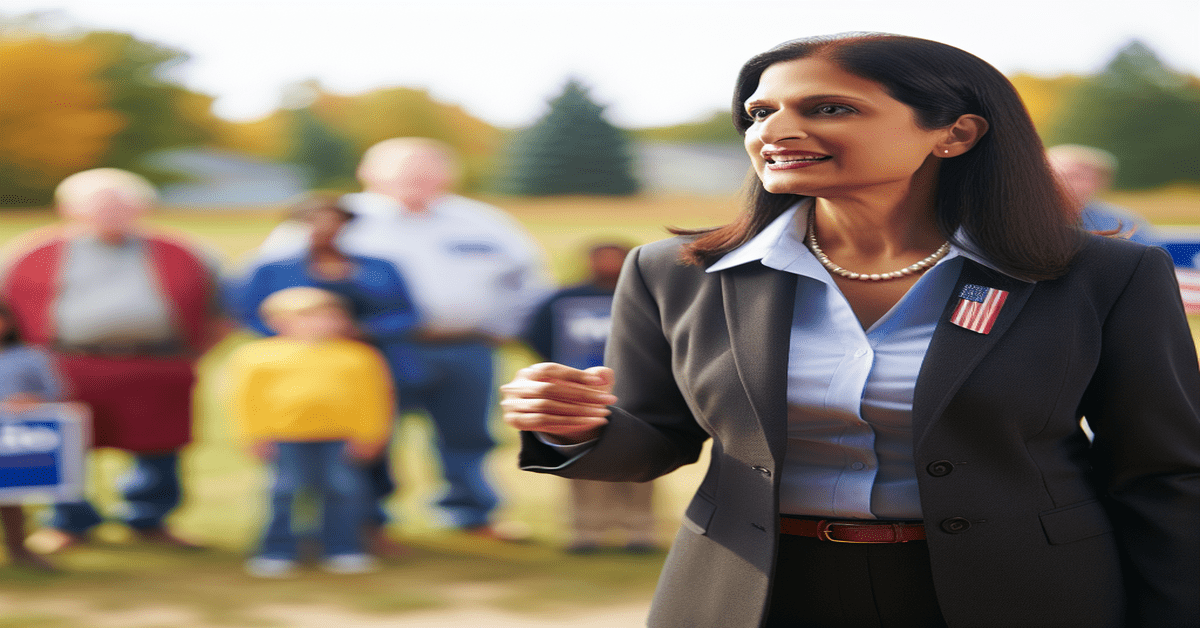Donald Trump’s False Claim: Kamala Harris’ Campaign Photo and the Reality of AI
In a recent social media post, former President Donald Trump made a bold and unfounded claim that a campaign photo of Vice President Kamala Harris in Michigan was created using artificial intelligence (AI). This allegation has sparked discussions about the growing influence of AI in politics and the importance of fact-checking in the digital age.
The Controversial Post
Trump’s post, which quickly gained traction on social media platforms, suggested that the image of Harris surrounded by a diverse group of supporters was not genuine but rather a product of AI manipulation. The former president’s claim implied that the Harris campaign had resorted to using AI-generated imagery to boost her popularity and appeal to a wider audience.
The Reality Behind the Photo
However, upon closer inspection, it becomes clear that Trump’s assertion is baseless. The photograph in question is, in fact, a real image captured during one of Harris’ campaign events in Michigan. The picture, which features the Vice President interacting with a group of enthusiastic supporters, was taken by an official campaign photographer and has not been altered or generated by AI.
The Implications of Trump’s False Claim
Trump’s unfounded accusation raises concerns about the spread of misinformation and the potential impact of such claims on public perception. In an era where AI is becoming increasingly sophisticated, it is crucial to distinguish between genuine images and those that have been manipulated or generated by algorithms.
The incident highlights the need for individuals, especially those in positions of influence, to exercise caution and verify information before making public statements. False claims, even when made unintentionally, can erode trust in political figures and contribute to a climate of skepticism and division.
The Growing Role of AI in Politics
While Trump’s claim about Harris’ campaign photo is unfounded, it is essential to acknowledge the growing presence of AI in the political sphere. AI technologies are being used for various purposes, such as data analysis, targeted advertising, and even the creation of deepfakes – highly realistic but fabricated videos or images.
As AI continues to advance, it is likely that we will see more instances of AI-generated content in political campaigns and public discourse. This underscores the importance of media literacy and the ability to critically evaluate the authenticity and credibility of information presented to us.
The Responsibility of Public Figures
Public figures, particularly those with a significant following, have a responsibility to promote truth and accuracy in their statements. Spreading misinformation, whether intentionally or not, can have far-reaching consequences and contribute to a erosion of public trust.
In the case of Trump’s claim about Harris’ campaign photo, it is crucial for political leaders and influencers to fact-check their assertions before sharing them with the public. By prioritizing accuracy and transparency, we can foster a more informed and constructive political dialogue.
The Role of Fact-Checking and Media Literacy
The incident also underscores the vital role of fact-checking and media literacy in combating the spread of misinformation. Media outlets, fact-checking organizations, and individuals all have a part to play in verifying claims and promoting accurate information.
In an age where information travels at an unprecedented speed, it is essential for citizens to develop critical thinking skills and to approach claims with a healthy dose of skepticism. By cross-referencing sources, seeking expert opinions, and relying on reputable news outlets, we can better navigate the complex landscape of political discourse.
Moving Forward: Embracing AI Responsibly
As AI continues to shape various aspects of our lives, including politics, it is crucial to approach this technology with a balanced perspective. While AI has the potential to revolutionize campaign strategies and engage voters in new ways, it is essential to use it responsibly and transparently.
Political campaigns and public figures should be forthcoming about their use of AI technologies and ensure that any AI-generated content is clearly labeled as such. By promoting transparency and accountability, we can harness the power of AI while mitigating the risks of manipulation and deception.
Conclusion
Donald Trump’s false claim about Kamala Harris’ campaign photo serves as a reminder of the challenges we face in an era of rapid technological advancement and information overload. As AI becomes more prevalent in politics and public discourse, it is crucial to remain vigilant against the spread of misinformation and to promote truth and accuracy.
By fact-checking claims, fostering media literacy, and encouraging responsible use of AI, we can navigate this new landscape with integrity and maintain a healthy and informed political dialogue. It is up to all of us – public figures, media outlets, and citizens alike – to prioritize truth and work towards a more transparent and trustworthy political future.
#KamalaHarris #ArtificialIntelligence #Misinformation #FactChecking #PoliticalDiscourse
-> Original article and inspiration provided by CNN
-> Connect with one of our AI Strategists today at Opahl Technologies


